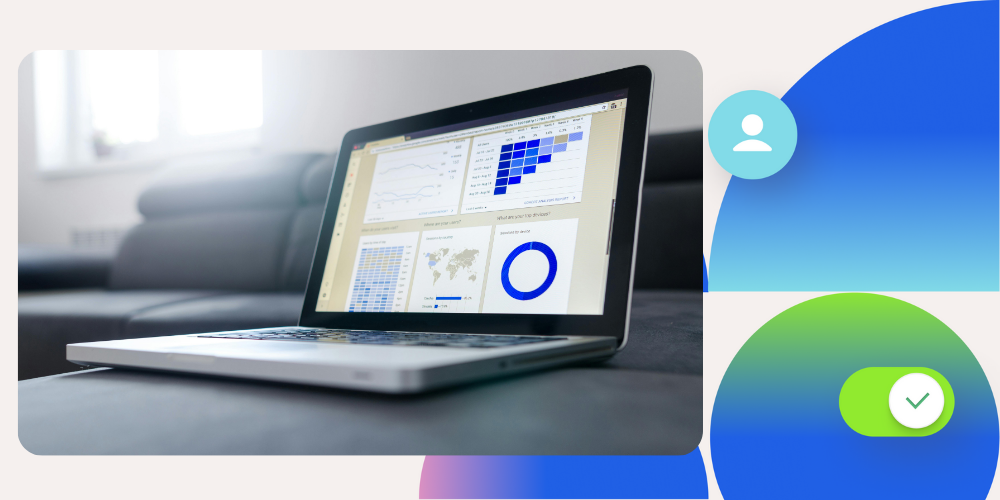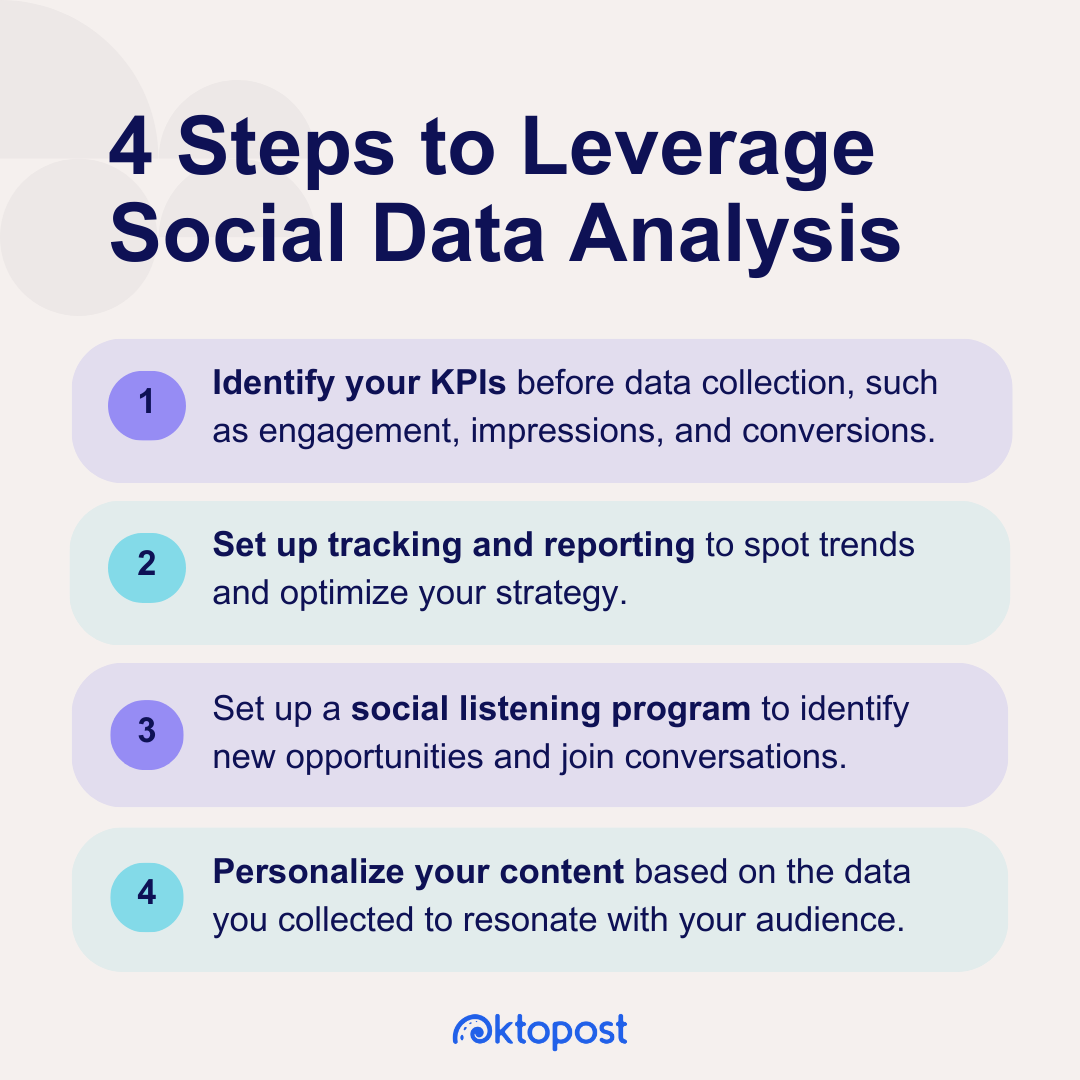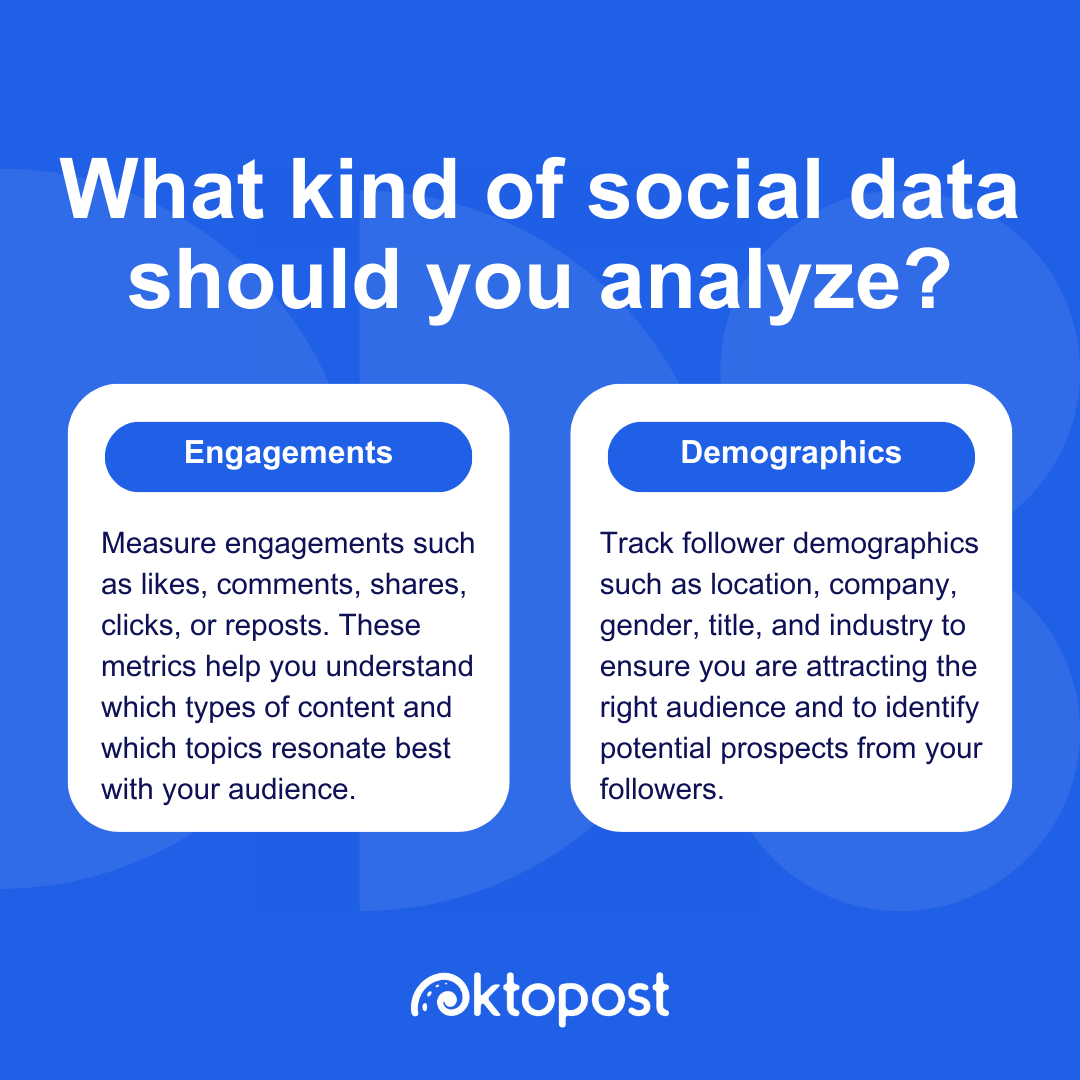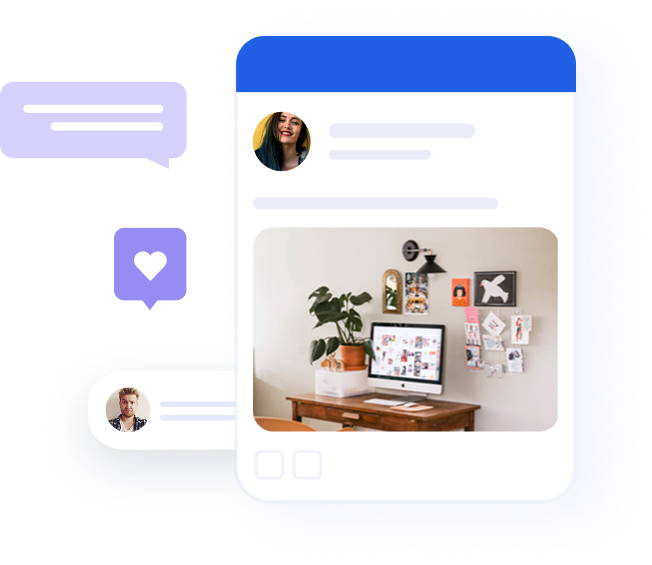Social data analysis: The pros and cons of social data

Table of contents
In today’s social media-driven world, customer behavior, public sentiment, and audience preferences are more visible than ever. But when it comes to social media data gathering, the way you use your data is more important than the quantity you have.
Social media is no longer just about networking. A staggering 75% of B2B buyers use social media to make purchasing decisions. Your buyers are online, scrolling through feeds, engaging with your social media posts, and researching brands before ever filling out a contact form. Every click, share, and comment becomes a valuable piece of your data puzzle.
By leveraging data collection from social media, brands can refine their social media strategy, enhance customer relationships, manage their brand reputation, and drive sustainable growth. However, like any powerful tool, analyzing social media presents both opportunities and challenges. The key is using the right tools, frameworks, and insights to collect, process, and act on that data effectively.
What kind of social data can you analyze?
With so many social media metrics available, deciding what to focus on can feel overwhelming. However, the most impactful data aligns directly with your business goals, helping you better understand how your audience engages across various platforms.
Here are the key types of social media data to monitor:
- Engagements: Likes, comments, shares, reposts, retweets, clicks—these help determine which content types spark interaction.
- Demographics: Understand who’s engaging by tracking data like company, job title, location, industry, and gender.
- Sentiment analysis: Are comments positive, neutral, or negative? Sentiment helps contextualize high-level metrics.
- Reach and impressions: Evaluate how far your social media campaigns are spreading across platforms.
- Traffic and conversions: Use tools like Google Analytics to measure how social media drives visits and conversions on your website.
- Competitive benchmarks: Monitor competitor activity to reveal strengths, gaps, and opportunities.
You can also gain insights by tracking which social media platforms deliver the most ROI for different types of content. For example, while LinkedIn may drive B2B engagement, Instagram may be more effective for employer branding or reaching a broader audience through short-form video.
Key components of social data analysis
1. Social media data gathering and collection
All analysis begins with the collection of media data. This involves selecting the appropriate social media accounts to monitor, defining key performance indicators (KPIs), and capturing relevant data. While some teams still rely on manual tracking with spreadsheets, most brands use social media analytics tools like Oktopost, Sprout Social, or Hootsuite for automation and accuracy.
Integrating your social networks into a single platform enables centralized tracking, reduces reporting errors, and allows you to compare performance across channels in real-time.
2. Processing and cleaning data
After collecting your raw data, you’ll need to clean it. This step includes removing spam, filtering out irrelevant engagement (such as from bots or internal employee shares), and ensuring consistency in formats. Clean, structured data is crucial for generating actionable insights and accurate reporting.
3. Analyzing social media
Now the magic begins. Start by looking at macro trends, then zoom in on specific campaigns or audience segments. For example, if a campaign received more engagement than others, ask why. Was it the format, timing, message, or channel?
Analyzing your social performance regularly helps identify patterns you can use to optimize your content strategy, refine messaging, and inform product decisions.
4. Visualization and reporting
Visual data helps tell compelling stories. Use bar graphs, funnel charts, and heat maps to make insights more digestible for stakeholders. With Oktopost’s Social BI, you can quickly generate customized social media analytics reports to present campaign results or strategic insights across departments.
5. Turning data into decisions
Effective social media analytics isn’t just about answering questions about what happened. The real value comes from using that data to shape what happens next. For example:
- If high-production video content isn’t performing, it might be time to scale back.
- If audience growth is stagnating, reassess which social media platforms you’re prioritizing.
- If comments on your product post include repeated complaints, route that feedback into product development.
This feedback loop turns social media into a vital tool for business intelligence and strategic growth.

Recommended for further reading
Pros of social media data analysis
1. Optimized content strategy
By understanding what resonates, you can craft more effective social media posts. You’ll know which topics, formats, and posting times drive engagement, and which ones you need to cut.
Using campaign tagging on platforms like Oktopost enables granular breakdowns across funnel stages. From there, you can repurpose top-performing posts into blogs, videos, and ads.
2. Insights into customer behavior
Social media analytics tools help uncover which content drives interest across different social media platforms. For instance, video may thrive on LinkedIn, while carousels might win on Instagram.
These insights help create more innovative content plans and personalized messaging that align with how your audience engages across channels.
3. Product feedback in real time
Social listening tools enable direct data collection from social media, including complaints, suggestions, or feature requests. This feedback can be routed to product teams to prioritize fixes or validate ideas.
Example: A SaaS company notices repeated Twitter complaints about pricing complexity. This prompts a new landing page with simplified tiers, driven directly by social feedback.
4. Better customer support
Analyzing DMs and comment threads reveals the support issues that arise on social media. If billing queries frequently dominate your LinkedIn inbox, consider sharing this insight with your support team to enhance onboarding or documentation.
5. Brand health & reputation management
Monitoring brand mentions, hashtags, and keyword trends helps manage perception and uncover risks before they escalate. Sentiment analysis tools categorize brand mentions as positive, negative, or neutral to identify trends early.
Cons of social media data analysis
While the benefits are significant, challenges exist:
1. Data privacy and compliance
Ensure your analytics process respects user privacy and adheres to regulations like GDPR. Choose platforms, like Oktopost, that offer secure environments and ethical data handling.
2. Data silos
If data lives separately across teams—marketing, sales, support—you’ll miss the whole picture. Integrating social media analytics reports with CRM and customer support platforms gives better business context.
3. Inaccurate or skewed data
Bot activity and fake accounts can distort results. A post that went viral with spam accounts might look successful in terms of reach, but it provides no real business value.
4. Resource demands
Analyzing social media effectively requires budget, tools, and skilled staff. Small teams may struggle to justify these costs without a historical return on investment (ROI).
5. Cultural and language barriers
For global brands, social media data gathering needs a localized understanding. A sarcastic TikTok trend in the US may not resonate in EMEA. Local context is key to accurate interpretation.

4 Steps to use social data to power your strategy
- Identify KPIs early: Select key performance indicators (KPIs) such as engagement rate, reach, and conversions. These should guide both social media campaigns and ongoing content planning.
- Track and report consistently: Use tools to generate frequent, automated reports. This lets you test ideas and adjust in near real-time.
- Set up social listening streams: Go beyond your posts. Track competitor mentions, hashtags, and industry conversations to identify trends early.
- Personalize based on data: Use social insights to customize posts, emails, and even ads. For example, if your LinkedIn audience favors thought leadership, lead with that on the platform.
Platform examples and integration benefits
Different platforms yield different insights:
- LinkedIn: Great for B2B audience targeting and engagement quality.
- X (formerly Twitter): Real-time sentiment, breaking conversations.
- Instagram: Visual engagement and community building.
- TikTok: Emerging trends, creative performance testing.
By integrating all your social media accounts into one platform like Oktopost, you can compare how each channel contributes to traffic, lead generation, and pipeline. Cross-channel comparison is essential: a post that underperforms on Instagram may be a top converter on LinkedIn.
You can also enrich Google Analytics reports with UTMs to map social touchpoints along the customer journey. This connects social media presence to revenue outcomes, which is crucial for teams that need to justify the return on investment (ROI) of social media marketing.
Make your data actionable
Social media data is a powerful source of marketing intelligence. But it’s only useful if you act on it. Whether refining your content strategy, adjusting posting times, or building reports that speak to C-level stakeholders, consistent analysis drives smarter decisions.
Done right, it transforms your brand from a passive poster to a data-driven, socially-aware voice that adapts to changing audiences and grows smarter with every post.
Discover how Oktopost enables teams to turn insights into impact by unifying platforms, surfacing trends, and transforming your social media presence into measurable business value.





